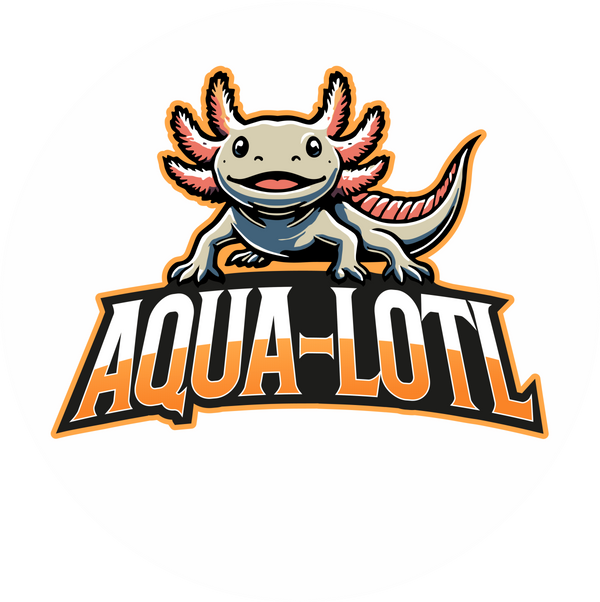How to Set Up the Perfect Axolotl Tank (Step-by-Step Guide)
Share
Setting up your axolotl's tank correctly is one of the most important steps toward keeping your axolotl healthy, happy, and stress-free. A proper tank setup supports stable water quality, reduces illness, and helps your axolotl thrive for years.

In this guide, we'll break down exactly what you need for a complete axolotl tank setup, from tank size to temperature — no fluff, just what works.
🐟 1. What Size Tank Do Axolotls Need?
✅ Best Option:
40-gallon breeder tank
Ideal for one large adult axolotl, with room to add a second if needed
✅ Minimum Size:
20-gallon long tank
Acceptable for one juvenile or small adult axolotl
🧠 Bigger tanks mean more stable water parameters, less frequent cleanings, and more room for your axolotl to swim and explore.
💨 2. Filtration — What Kind of Filter Is Best?
Axolotls are sensitive to water flow, so your filter needs to be gentle but effective.
✅ Best Filter Types:
Sponge filter — great for biological filtration and minimal current
Hang-on-back (HOB) filter with a flow adjuster or baffle
Important Tips:
Avoid strong current or water flow — it will stress your axolotl
Run the filter 24/7 to support your nitrogen cycle
Bonus: Add a sponge pre-filter to any intake tube to protect delicate gills.
🏝️ 3. Substrate — What Goes on the Bottom of the Tank?
Substrate choice is critical — and mistakes can be deadly.
For Axolotls Under 5 Inches:
Bare-bottom tank
Smooth ceramic tile
For Axolotls Over 5 Inches:
Fine aquarium sand only
❌ Avoid:
Gravel, pebbles, marbles, or any stones smaller than the axolotl’s head — these can cause fatal impactions if swallowed.
Want a safe alternative to sand? Black diamond blasting sand (rinsed well) is popular and cheap.
🪨 4. Decorations — What to Add (and Avoid)
Axolotls love to hide and explore, but their skin and gills are delicate.
Safe Tank Decor Ideas:
PVC pipes
Smooth aquarium hides or caves
Soft silk or live plants like:
Java Fern
Hornwort
Anubias
Important:
Avoid anything sharp or jagged — sand edges if needed
Decorations should be easy to clean and not trap debris
Hides help reduce stress and promote natural resting behavior.
💡 5. Lighting — How Bright Should It Be?
Axolotls naturally live in low-light environments, and too much light can stress them out.
Lighting Tips:
Use dimmable LED lights or indirect room light
Keep light periods short (6–8 hours max if using artificial light)
Add floating plants or tank shade to reduce brightness
Bright tanks with no cover can lead to stress, refusal to eat, and color fading.
🌡️ 6. Temperature — Keep It Cool
Axolotls are cold-water animals. Water that’s too warm can cause:
Lethargy
Gill damage
Stress-related illness
Shortened lifespan
Ideal Temperature Range:
60–65°F (15–18°C)
Ways to Keep the Tank Cool:
Use a fan blowing across the surface
Aquarium Chiller
Float frozen water bottles as needed
Keep tank away from sunny windows or heaters
Use room AC if needed
NEVER use a heater — it’s unnecessary and dangerous.
✅ Final Step: Make Sure Your Tank Is Cycled
Before adding your axolotl, it’s essential that your tank is fully cycled.
This means:
Ammonia = 0 ppm
Nitrite = 0 ppm
Nitrate = Present (10–40 ppm)
If you're not sure what that means, read our full guide:
🧪 [How to Cycle Your Axolotl Tank]
🐾 Final Thoughts
A proper axolotl tank setup lays the foundation for everything — health, happiness, and long life.
Don’t rush it. Take the time to choose the right size tank, use safe substrate, and keep the water cool and clean.
Still need help? Reach out to us [Contact] or visit our full [Axolotl Care Guide] — we’re here to help new owners every step of the way.
